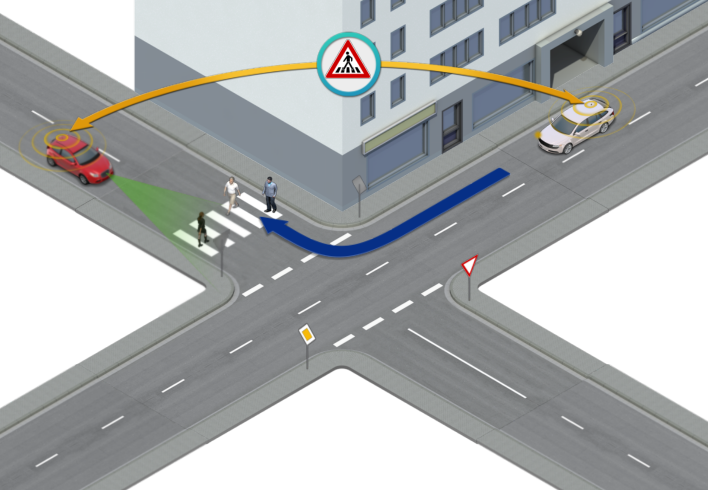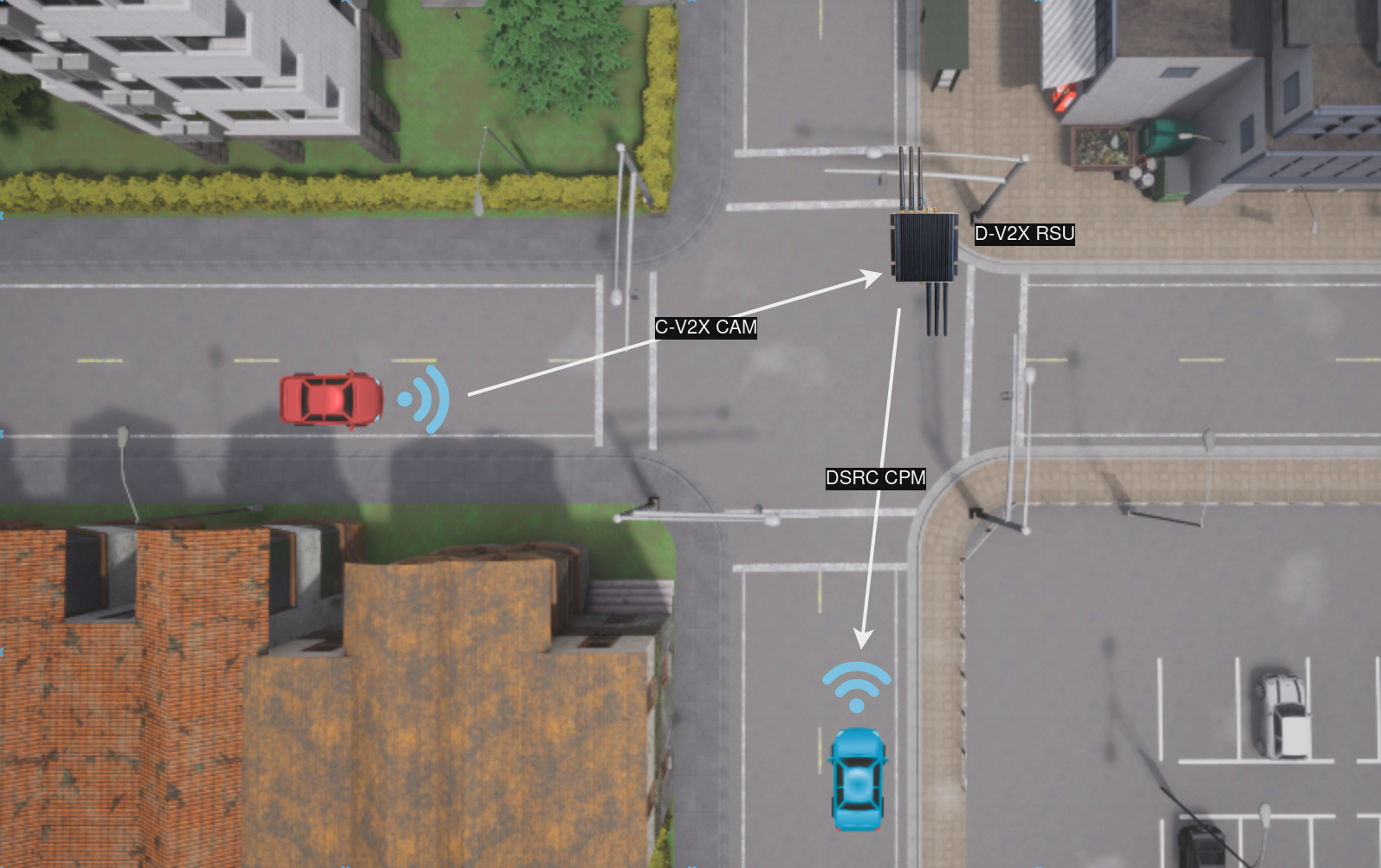Dual-V2X: Connecting DSRC with C-V2X
Deciding on Dual-V2X (D-V2X) and unlocking the Potential of Collective Perception Message
As a technology provider, we equip a range of cars, motorcycles and bicycles, with Vehicle-to-Everything (V2X) technology. These Intelligent Transportation System (ITS) stations are configured with either C-V2X or DSRC radio technology based on customer preferences, while our upper-layer applications remain radio-agnostic.
To conduct comprehensive tests, including scenarios like Intersection Movement Assist (IMA), we initially limited our tests to stations using a single radio technology. However, to conduct radio-independent tests, we needed to establish connections between C-V2X and DSRC stations while ensuring compliance with V2X standards. This will help us to interconnect our entire fleet during field tests.

Our Dual-V2X Road-Side Unit (D-V2X RSU) integrates two of our V2X modules. One module is configured for C-V2X communication, and the other for DSRC. While the D-V2X RSU is now capable of communicating in both languages concurrently, direct pass-through on layer 2 between them is prohibited to comply with congestion control rules. Furthermore, generating Cooperative Awareness Messages (CAMs) on one radio for messages received on the other is not allowed, preventing an RSU from transmitting CAMs for other vehicles (ETSI EN 302 637-2 V1.4.1, 6.1.1: “The CAM shall be transmitted only from the originating ITS-Station in a single hop”). The solution involves treating the RSU like it has two sensors: a DSRC radio sensor and a C-V2X radio sensor. When the D-V2X RSU detects an ITS station on one radio, it generates a corresponding CPM for that station on the other radio.
IThe process involves receiving C-V2X messages over the C-V2X radio and encapsulating them into a CPM structure that includes essential data such as position and speed as can be seen in Figure 2. This CPM is then transmitted over the DSRC radio, allowing DSRC stations to detect C-V2X stations, and the reverse procedure occurs as well.

This approach ensures connectivity across our entire fleet without violating V2X standards. Successful testing of our D-V2X technology, equipped with CPM-capable devices, occurred in real-world scenarios, as exemplified in Figure 3, where a crossing scenario for the IMA application is showcased. Our D-V2X RSU located near an intersection, enables the C-V2X vehicle to activate the IMA application and warning the driver about the approaching DSRC-equipped vehicle.

In our pursuit of radio-independent testing for V2X technology, we've harnessed the power of CPMs to seamlessly connect C-V2X and DSRC stations, ensuring compliance with V2X standards and paving the way for a future where all road users, V2X-equipped or not, can communicate safely and effectively.
